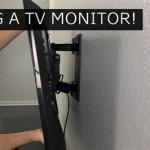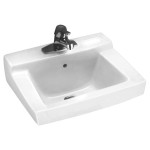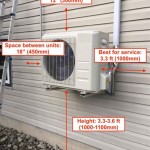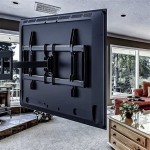Mounting a TV on a Plaster Wall Without Studs: A Comprehensive Guide
Mounting a television offers a space-saving solution and enhances viewing comfort. However, many homeowners are faced with the challenge of mounting a TV on a plaster wall, particularly when studs are not readily accessible or conveniently located. Plaster walls, characterized by their lathe-and-plaster construction, present a distinct set of considerations compared to drywall. This article provides a comprehensive guide to mounting a TV on a plaster wall without studs, covering the necessary tools, techniques, and safety precautions.
Plaster walls differ significantly from drywall in their composition and structural integrity. Drywall is a relatively uniform material that readily accepts screws and anchors. Plaster, on the other hand, comprises a layer of plaster applied over wood or metal lath. The lath provides a key for the plaster to adhere to, creating a more durable but also more brittle surface. Drilling into plaster can cause cracking and crumbling, especially if not done correctly. Identifying the absence of studs adds another layer of complexity, as the weight of the TV must be supported solely by the plaster itself or specialized anchors designed for studless applications.
Successfully mounting a TV on a plaster wall requires careful planning, the right tools, and a methodical approach. Neglecting any of these aspects can result in damage to the wall, an unstable TV mount, or even personal injury.
Understanding the Challenges of Mounting on Plaster Without Studs
The primary challenge in mounting a TV on a plaster wall without studs is the need to secure the TV mount to a relatively weak material. Plaster, while durable in some respects, lacks the inherent strength of wood studs found in conventional wall construction. This means relying on specialized anchors that can distribute the weight of the TV across a larger surface area of the plaster. Furthermore, the brittle nature of plaster necessitates careful drilling and installation techniques to prevent cracking and crumbling. It is crucial to assess the weight of the TV to ensure that the chosen mounting hardware and anchors are rated to support the load safely. Overestimating the weight capacity is always preferable to underestimating it.
Another significant challenge is accurately locating the electrical wiring and plumbing within the wall. Drilling blindly into a plaster wall can inadvertently damage these systems, leading to costly repairs and potential safety hazards. Using a stud finder with AC wire detection capabilities can help identify the location of electrical wiring. However, it's important to note that these devices are not foolproof and should be used with caution. If there is any doubt about the location of wiring or plumbing, consulting a qualified electrician or plumber is highly recommended.
Finally, the aesthetics of the installation must be considered. Patching and repairing plaster can be more challenging than drywall, so minimizing the size and number of holes is essential. Choosing a TV mount that covers a larger area can help conceal minor imperfections and distribute the weight more evenly. Furthermore, carefully planning the placement of the TV and the routing of cables can contribute to a clean and professional-looking installation.
Selecting the Right Tools and Hardware
The success of a plaster wall TV mount heavily depends on using the correct tools and hardware. Essential tools include a stud finder with AC wire detection, a drill with a variety of drill bits (including a masonry bit for plaster), a level, a measuring tape, a pencil, a screwdriver (or drill with screwdriver bits), and safety glasses.
Choosing the appropriate anchors is paramount. Several types of anchors are suitable for plaster walls without studs, each with its own advantages and limitations. Toggle bolts are a popular option, providing strong and reliable support. They consist of a bolt and a butterfly-shaped toggle that expands behind the wall to distribute the weight. Toggle bolts require a relatively large hole, but they offer excellent holding power. Molly bolts are another viable choice, featuring a sleeve that expands as the bolt is tightened, gripping the back of the plaster. Molly bolts are easier to install than toggle bolts but may not provide the same level of support. Self-drilling drywall anchors, also known as wall anchors or screw anchors, are designed to be screwed directly into the plaster without pre-drilling. These anchors are suitable for lighter TVs but may not be sufficient for heavier models.
The TV mount itself should be chosen based on the size and weight of the TV, as well as the desired viewing angle. Fixed mounts are the simplest and most affordable option, holding the TV flush against the wall. Tilting mounts allow for vertical adjustment, reducing glare and improving viewing comfort. Full-motion mounts offer the greatest flexibility, allowing the TV to be extended, swiveled, and tilted to achieve the optimal viewing position. Ensure the mount is VESA compliant, which refers to the standard mounting interface on the back of TVs. Check the VESA specifications of the TV and the mount to ensure compatibility.
In addition to the anchors and the mount, consider the necessary cables and accessories. HDMI cables are essential for connecting the TV to various devices, such as cable boxes, Blu-ray players, and gaming consoles. Power cables, Ethernet cables, and audio cables may also be required, depending on the setup. Cable management solutions, such as cable ties, cable sleeves, and wall plates, can help keep the cables organized and hidden, creating a cleaner and more professional-looking installation.
Step-by-Step Guide to Mounting the TV
Following these steps will help to guide you through safely and successfully mounting a TV onto a plaster wall.
Step 1: Planning and Preparation. Before starting, carefully plan the placement of the TV. Consider the viewing distance, the viewing angle, and the location of electrical outlets and cable jacks. Use a stud finder to scan the wall for studs and electrical wiring. Mark the desired location of the TV mount with a pencil. Lay down a drop cloth to protect the floor from debris.
Step 2: Drilling Pilot Holes. Using a drill with a masonry bit, carefully drill pilot holes at the marked locations. Start with a small drill bit and gradually increase the size until the holes are large enough to accommodate the chosen anchors. Drill slowly and steadily to prevent cracking or crumbling the plaster. If you encounter resistance, stop drilling and check for wiring or plumbing.
Step 3: Installing the Anchors. Insert the chosen anchors into the pilot holes. For toggle bolts, fold the toggle and insert it through the hole, then tighten the bolt until the toggle expands behind the wall. For molly bolts, insert the bolt and tighten it until the sleeve expands and grips the back of the plaster. For self-drilling drywall anchors, simply screw them directly into the plaster. Ensure the anchors are securely installed and can support the weight of the TV.
Step 4: Attaching the TV Mount. Attach the TV mount to the anchors, using the screws provided with the mount. Ensure the mount is level and securely fastened to the wall. Double-check that all screws are tightened properly.
Step 5: Mounting the TV. Carefully lift the TV and attach it to the mount, following the instructions provided with the mount. Ensure the TV is securely attached and properly aligned. Double-check that all screws are tightened properly.
Step 6: Cable Management. Connect all necessary cables to the TV and other devices. Use cable ties, cable sleeves, or wall plates to organize and conceal the cables. Ensure the cables are not obstructing the TV or the mount.
Step 7: Testing and Adjustments. Turn on the TV and test all inputs and functions. Adjust the viewing angle as needed. If necessary, make any final adjustments to the mount or the cables.
Step 8: Clean Up. Remove the drop cloth and clean up any debris. Dispose of any leftover materials properly.
By following these steps and taking the necessary precautions, homeowners can successfully mount a TV on a plaster wall without studs, achieving a professional-looking installation and enhancing their viewing experience.

Mounting Tv On Plaster Wall No Studs

How To Mount Tv On Plaster Lath Wall Magnetic Stud Finder For Walls

How To Mount A Tv On Plaster Wall Without Studs Easily Installation Toronto

How To Mount A Tv On Plaster Wall Without Studs
How To Mount A Tv On Plaster Wall Without Studs Quora

How To Mount A Tv On The Wall Without Studs It

How To Mount A Tv On Plaster Wall Without Studs Checkatrade

How To Mount A Tv On The Wall Without Studs Installation Toronto

How To Mount A Tv On Plaster Wall Without Studs Checkatrade

How To Mount A Tv On Plaster Wall Without Studs








